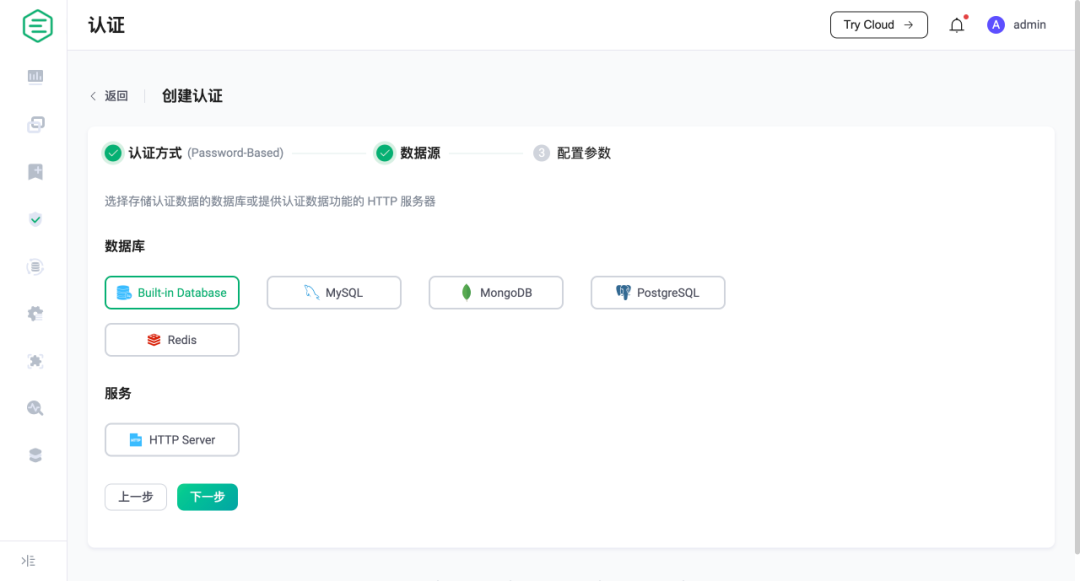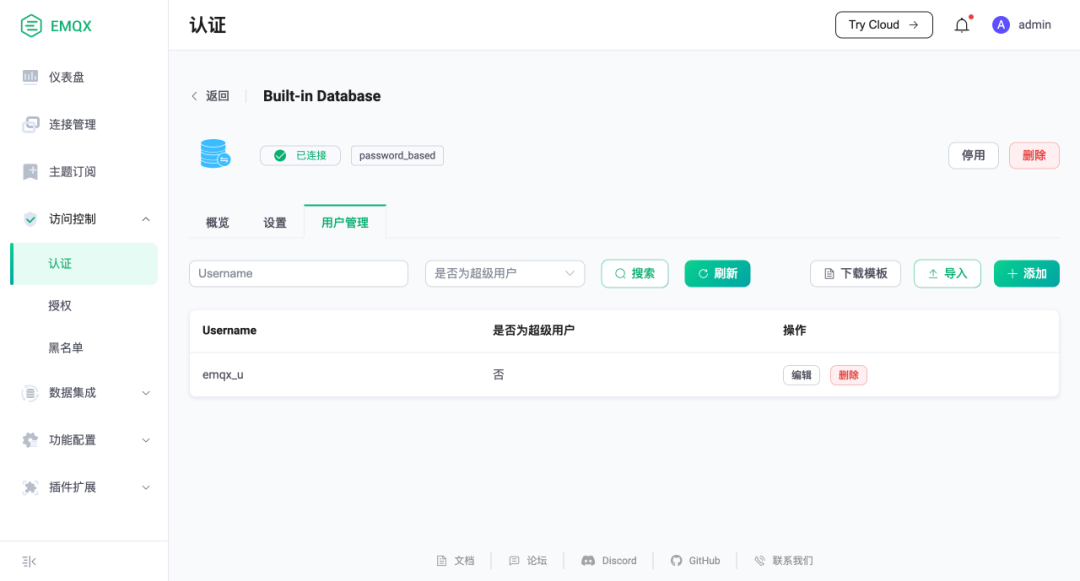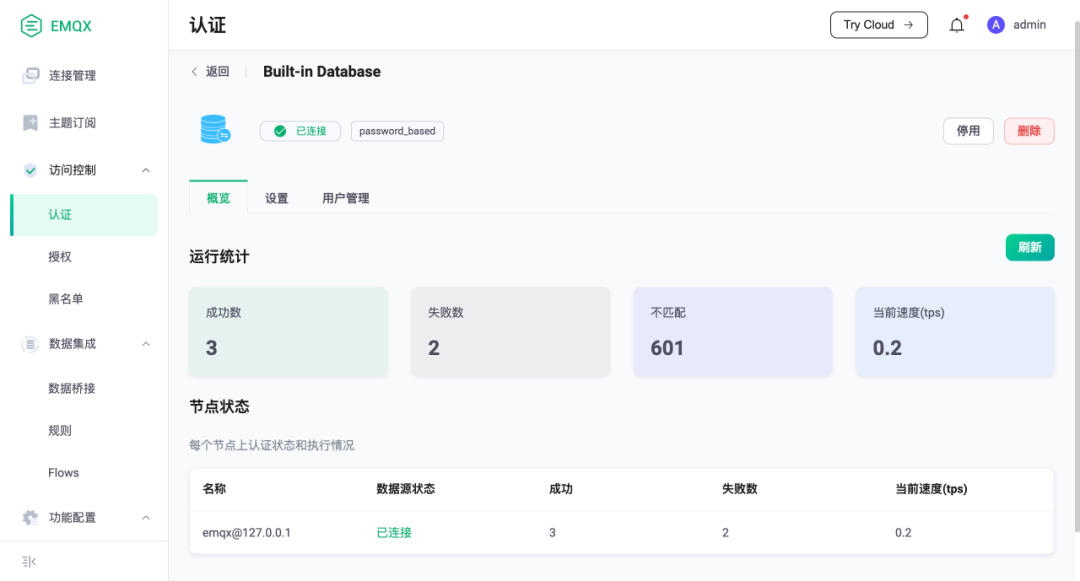Introduction: Flexible Authentication/Authorization Mechanisms Provide Efficient Security Assurance
EMQX has always placed great emphasis on security, providing continuous enhancement of security guarantees for IoT users through a wide range of out-of-the-box security features, including MQTT over TLS/SSL, transmission encryption and authentication integration based on national cryptography algorithms, as well as various identity authentication functions such as username/password, LDAP, JWT, PSK, and X.509 certificates.
This article will present a detailed analysis of the EMQX client authentication and authorization mechanisms and related optimizations in version 5.0, demonstrating the principles and mechanisms behind EMQX’s security assurance for IoT, helping readers better utilize this feature to build more secure and reliable IoT platforms and applications.
EMQX Client Authentication Mechanism
Identity authentication is a crucial component of most applications, and the same applies to IoT applications.
The MQTT protocol allows clients to carry username/password for authentication; based on this, EMQX extends the capability for clients to carry tokens in the password for JWT authentication. Meanwhile, EMQX fully supports the enhanced authentication features of MQTT 5.0, capable of achieving mutual authentication between clients and servers through a challenge/response style, providing stronger security guarantees.
Three Authentication Methods
Password Authentication
EMQX supports the simplest and most widely used authentication method, password authentication, which requires clients to provide credentials that indicate their identity, such as username, client ID, and corresponding password. In some scenarios, users may choose to use certain fields in the TLS certificate (e.g., the common name of the certificate) as client identity credentials.
Regardless of the identity credentials used for authentication, these credentials are stored in a specific data source (database) in advance, where passwords are typically stored in a salted and hashed format, which is the method we strongly recommend.
The basic operation principle of password authentication in EMQX is as follows: when a client connects, EMQX will use the user-specified query statement to query the hashed password corresponding to the identity credentials provided by the client in the database, and then match it with the hashed value of the password currently used by the client. Once matched successfully, EMQX will allow the client to log in.

Password authentication process, using PostgreSQL as the data source
JWT Authentication
JWT (https://jwt.io/) is a token-based authentication mechanism that does not require the server to retain client authentication information or session information. Clients can carry tokens in their passwords or usernames, and EMQX verifies the JWT signature using a pre-configured key or public key.
If users configure a JWKs server, the JWT authenticator will verify the JWT signature using the public key list retrieved from the JWKs server. With the key in hand, users can issue authentication information for clients in bulk, making it the simplest authentication method.
MQTT 5.0 Enhanced Authentication
MQTT 5.0 enhanced authentication (https://www.emqx.com/zh/blog/mqtt5-enhanced-authentication) is an extension of password authentication, resembling an authentication framework that allows the use of various more secure authentication mechanisms, such as SCRAM authentication, Kerberos authentication, etc. Currently, EMQX supports SCRAM authentication and provides support for SCRAM user management through its built-in database.
In terms of transport layer, EMQX supports mutual authentication via TLS, which can satisfy the identity verification requirements between clients and servers to some extent. EMQX also supports PSK-based TLS/DTLS authentication, which will not be elaborated upon in this section.
Authentication Chain, Super Users, and Permissions
EMQX allows the creation of multiple authenticators to form an authentication chain, where authenticators will run in the order of their position in the chain. If no credentials are retrieved in the current authenticator, it will switch to the next authenticator in the chain to continue authentication. If no authenticators find data, client authentication will fail.
EMQX allows setting super user roles and predefined permission lists for clients during the authentication phase for subsequent publish/subscribe permission checks.
EMQX Authorization Mechanism
EMQX authorization refers to permission control over clients’ publishing and subscribing operations. Similar to client authentication, the client’s permission list also needs to be stored in a specific data source (database, file) in advance, and updating the corresponding data can achieve dynamic updates of permissions at runtime.
The basic operation principle of the authorization mechanism in EMQX is as follows: when a client publishes or subscribes, EMQX will use a specific process or user-specified query statement to query the access control list (ACL) related to that client from the data source, match it with the current operation, and allow or deny the operation based on the match result.
Cache, Authorization Chain, and Permission Priority
A large number of clients subscribing and publishing will put access pressure on the authorization data backend. Therefore, EMQX introduces a caching mechanism.
EMQX allows the creation of multiple authorization checkers to form an authorization chain, where authorization checks will run in the order of their position in the chain. If no permission data is retrieved in the current authorization checker, it will switch to the next checker in the chain to continue checking. If all checkers fail to find data, the client will be allowed or denied the operation based on the no_match configuration (https://www.emqx.io/docs/zh/v5.0/security/authz/authz.html#no-match).
If a client has set a super user role during the authentication phase, subsequent publish/subscribe operations will not trigger authorization checks; if a permission list is set, it will prioritize matching client permission data. The matching relationship is as follows:
Super User > Permission Data > Authorization CheckAuthentication and Authorization Data Sources
EMQX provides integration support with various backend databases for password authentication and authorization, including MySQL, PostgreSQL, MongoDB, and Redis.
Additionally, EMQX also supports users storing identity credentials and permission lists in a built-in database (based on Mnesia), which provides a very simple configuration process and user management interface. Users can manage authentication data through REST API or Dashboard, or import users in bulk from CSV or JSON files.
Moreover, EMQX can also interface with user-developed services via HTTP to achieve more complex authentication and authorization logic.


Removing Authentication and Authorization Plugins
In EMQX 5.0, we have migrated the authentication and authorization features from plugins to built-in functionality, and the original authentication and authorization plugins are no longer built-in.
In addition to configuration files, EMQX allows configuring authentication and authorization features through the Dashboard and REST API, selecting the desired authentication methods, preferred data sources, and filling in parameters to enable connection authentication and authorization checks, providing the most critical security protection for clients. The REST API configuration method allows the configuration to be distributed once and take effect across all nodes in the cluster, greatly enhancing usability and enabling faster onboarding.
Compared to version 4.x, when using built-in data, EMQX 5.0 also provides a data management page in the Dashboard, allowing users to complete data import/addition and management directly in the browser, truly achieving out-of-the-box zero development capability.

Retaining Plugin Usage Method
The built-in authentication and authorization are also controlled through a hook mounting method, and users can still use authentication and authorization plugins developed in EMQX 4.x or develop new plugins based on EMQX 5.0. In this case, the priority of execution will be determined by the hook mounting order of the plugins and built-in features.
The following is the hook information for mounting authentication and authorization features; for more information, please refer to: https://www.emqx.io/docs/zh/v5.0/advanced/hooks.html

Removing Anonymous Authentication Mechanism
* We strongly recommend that users disable anonymous authentication in production environments to prevent clients not listed in the database from connecting to EMQX.
-
If EMQX is configured with no authenticators, it allows all clients to connect.
-
After EMQX configures authenticators:
-
All authenticators disabled: Allow clients to connect.
-
Any authenticator enabled: Look for identity credentials for authentication; if no identity credentials are found among all enabled authenticators, the client will be prohibited from connecting.
 EMQX 5.0 Authentication Chain Diagram
EMQX 5.0 Authentication Chain Diagram
Adjusting the Order of Authenticators and Authorization Checkers
Users can create multiple authenticators and authorization checkers to form a chain for chained authentication. Although we do not recommend this, it can be beneficial in certain scenarios: For example, in extreme scenarios with a large number of clients and high publish/subscribe rates, users may use Redis as the first authorization checker in the chain, paired with HTTP authorization check services, leveraging Redis’s high performance and built-in TTL advantages to provide a caching layer for higher performance authorization checks.
Previously, the execution order of checkers in the chain was determined by the corresponding plugin loading order, and there was no corresponding configuration interface, which led to several issues:
-
EMQX required manual execution of the plugin loading operation on each node during initial startup to ensure the plugin loading order met business requirements.
-
EMQX would automatically load the previously loaded plugins upon restart, disrupting the plugin loading order.
-
Subsequent maintenance and usage could not perceive the order of the chain.
EMQX 5.0 has optimized these issues: authenticators and authorization checkers will be loaded and executed in the order specified in the configuration from top to bottom, allowing users to control the order from the configuration perspective.
We also provide a Dashboard and REST API that allow users to adjust the order of authenticators and authorization checkers through drag-and-drop and up/down movement, ensuring it meets business needs.
Achieving Observability for Authentication and Authorization
EMQX 5.0 provides authentication and authorization statistics metrics, which can separately count the total across the cluster as well as the execution status of authenticators and authorization checkers on individual nodes, including the following data:
-
Success Count: Number of successful authentications or authorizations
-
Failure Count: Number of failed authentications or authorizations
-
No Match: Number of times no user credentials or permission lists were found
-
Current Rate: Current execution speed
Through authentication and authorization statistics metrics, users can promptly discover issues such as a large number of failed authentications/authorizations, allowing for timely awareness of abnormal situations in the security system.

Configuring Another Authentication Method for Listeners
By default, all clients connecting to EMQX through listeners use the same authentication method, reading data from the same authentication data source.
However, in an EMQX cluster that connects multiple services simultaneously, users may need to configure different authentication methods for each connection method based on different business needs, such as:
-
Clients connecting through MQTT over WebSocket do not issue permanent username/password credentials, but rather use time-sensitive JWTs for authentication to ensure business security;
-
Hardware devices connecting through MQTT TCP will burn in username/password or client certificate during initialization, and this authentication credential will not change throughout its lifecycle, allowing for password authentication;
-
Listeners for backend service connections do not require authentication checks; these listeners typically listen on internal network addresses with sufficient security.
EMQX 5.0 allows setting a different authentication method for specific listeners or disabling authentication checks for a listener to flexibly adapt to various authentication needs.
A globally shared authentication method can meet the client authentication needs of the vast majority of scenarios, and for most users, listener-level authentication settings are inconspicuous; users who need to can simply configure it in the listener.
Conclusion
Source:IoT Technology
